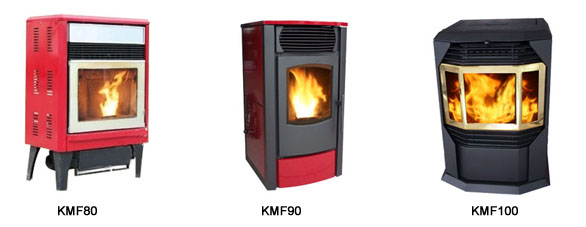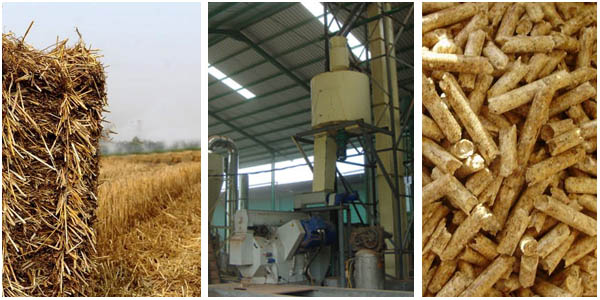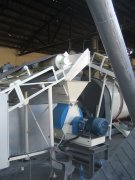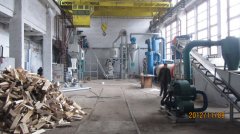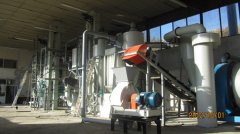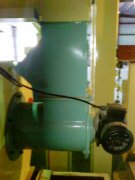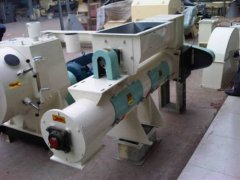How to use wood pellet stoves
How wood pellet stoves works
Everyone loves a fire. But let's face it -- the chopping and storing and constant stoking of firewood can be a drag. Not to mention the worry about whether or not you put it out all the way before you go to sleep. Plus, wood smoke contains hundreds of chemical compounds that can affect your health, and in many areas, wood smoke is a major contributor to pollution. So what's a fire lover to do? Rest assured there's an alternative that's not only convenient, but also cost-effective and environmentally friendly. It's called a wood pellet stove.
Leading up to the 20th century, 90 percent of Americans used wood to heat their homes. Once fossil fuels came on the scene, using wood for fuel fell out of fashion, and by 1970, it's estimated that about 1 percent of the American population was burning wood to heat their homes. However, the energy crisis of the 1970s prompted people to start using wood again as a renewable energy alternative, and since then, fireplace use has been on the rise.
Wood pellet stoves resemble wood burning stoves and fireplaces, but the similarities end there. These stoves are electronically sophisticated appliances that offer an environmentally friendly and low-cost heating option for your home. In a time when environmental awareness is at the forefront and families are keeping a close eye on their finances, wood pellet stoves have become all the rage.
All wood pellet stoves require the same kind of fuel - the wood pellet. These pellets are the byproduct of sawmills and are made from recycled sawdust and wood shavings. The wood pellets look a lot like rabbit food and are considered eco-friendly because they're cheap and easy to manufacture. Plus, they have a very low pollution rate. You can also buy pellets made of grass and corn, but they're not intended for use in stoves specifically designated for wood pellets. The Mechanics of Wood Pellet Stoves
Wood pellet stoves operate with electricity. The pellets are loaded into the hopper, which is located either on the top or the bottom of the unit. The auger, which is like a long screw, is a motorized device that delivers the pellets from the hopper into the burn pot. The auger's speed determines the temperature of the stove.
Read: How to make wood pellets
The burn pot, which is housed in the combustion chamber, is then ignited. Pellets are heavily compressed, so they're dense and low in moisture, creating a hotter flame. The burn pot serves as the carburetor for the stove, mixing the air and fuel to create combustion, which simply put, is the process of burning. The ashes from the burnt pellets are captured in an ash pot, which needs to be cleaned periodically.
Unlike a standard fireplace, a pellet stove heats a room through convection. As you probably know, hot air rises. This is because as a gas rises in temperature, it becomes lighter and less dense, causing it to rise above the heavier cool air. Convection is the transmission of heat that occurs from this forced combination of cool and hot air currents. So, the convection blower pulls cool air in from the room, passing over the fire in the burn pot and making the flame hotter, which enables the pellets to burn evenly and efficiently.
This heated air then moves across a heat exchanger, which is designed to transfer clean air into your home through the room blower. The heat exchanger acts as a furnace when it's used in combustion, and it's located in the combustion chamber to prevent the outside of the stove from becoming hot.
The exhaust blower pushes the gases out of a narrow pipe in the back of the stove. This pipe can be vented into an existing chimney or connected to the outside through a small hole. It's important to note that even though a chimney isn't required, the exhaust blower is most effective when the pipe is installed at a vertical angle.
The stove is operated by a thermostat, which controls the number of pellets that the auger feeds into the combustion chamber. More pellets equals more heat. For example, pellets delivered at one pound (0.453 kilograms) per hour produces a gentle flame that will last a long time, but at five pounds (2.267 kilograms) per hour, your fire will blaze [source: hometips.com].
How to Use a Pellet Stove
A pellet stove operates more efficiently than most airtight, wood stoves. The drawback to a pellet stove is that it requires electricity to operate, but backup battery systems can be ordered for use during electrical outages. Pellet stoves channel the wooden pellets from the storage bin or hopper into the "burn pot" or "burn gate" by the use of an electrically powered screw-type auger. The heat created by burning the pellets passes through heat-exchanger tubes within the pellet stove to the room by a convection fan inside the stove. Below the burn gate or pot, an ash drawer contains the ash for removal when it is full.
Fuel
To use a pellet stove efficiently, start with using the right fuel. Pellet stoves cannot use wood logs or anything else but the pellets designed or approved for the stove. Approximately 3/8-inch to 1-inch compacted wood chips, bark, agricultural crop waste, paper, sawdust and other organic materials are compressed into pellets for burning. Some pellet stoves can burn other biomass fuels that include corn kernels, small wood chips, nutshells, sunflowers, beet pulp, soybeans and dried cherry pits. Check your owner's manual before using any of these other biomass fuels.
Venting
Ensure that venting and pipes meets local building requirements for efficient pellet-stove use. Install the pellet stove according to the manufacturer's instructions and seal stove piping seams appropriately, using stove cement or caulk rated for high temperatures as directed in the installation instructions. Some building jurisdictions require the use of special piping for pellet stoves. Ensure your chimney stands off the roof the required distance listed by local building ordinances. Clean venting yearly, using a chimney brush to keep the chimney free of fires.
Start Up and Shut Down
Pellet stove manufacturers configure their pellet stoves differently for start-up. Some use an automatic ignition system, a gel or other approved materials for start-up. Failing to follow the manufacturer's start-up procedures can cause problems with the stove's operation. Do not unplug the pellet stove to shut it down. Instead, use the automatic controls to set the shut-off for the unit, as the pellet stove needs to cool down completely before shutting itself off. Maintenance
Your new pellet stove requires routine maintenance to keep it at peak operating condition. Examine the burn pot daily. Clean it according to the manufacturer's instructions. Open the ash drawer weekly and empty the ash pot as needed. Follow the instructions in the manual for cleaning the heat exchanger. Some pellet stoves require professionals to clean the heat exchanger.
-----------------------------------------------------------------------------------------------------------------------------------------------
Applying of pellet stoves for home use
The development of wood pellet mill in 2014
Development prospect of wood pellet mill market in 2014-2015
Palm EFB Pellet Mill and Pellet Plant Will Usher in Chances
CE Certified Pellet Mills&Pellet Plants of DIN Pellets
News
- Issues that need to concerned during the applying of straw pellet mill
- How to make quality sawdust pellets
- Maintain of Screw Extrusion Pellet Mill
- Renewable resources get more subsides from the UK government
- Wood pellet mill is becoming pioneer of energy-saving and emission-reduction
- fuel per year(project) is being built in Chang Bai County Jilin provinces
- Shandong province has first exported biomass fuel
- Further processing of corn straw pellet
- India is developing biomass energy
- Drax secures forward power sales despite tough market
- How to use wood pellet stoves
- More pellet plant is being built
- Eco-friendly smokeless straw pellet fuel
- Factors which affect the compacting performance of biomass pellet fuel
- Biomass briquetting fuel is facing a good opportunity to make progress
- FAQ of Pellet
- Screw Type Extrusion Pellet Mill
- Compression Ratio of Pellet Mill
- Improving air quality through promotion of biomass stoves - KMEC Pellet Plant
- Effect of pore size of sieve to the production of straw pellet mill
- Wood Pellet Mill For Sale
- Wood Pellet Mill in China
- Wood Pellet Mill Machine
- The Southeast Asia pellet market is in depression
- Development prospect of fuel made by biomass pellet mill of Jilin province

